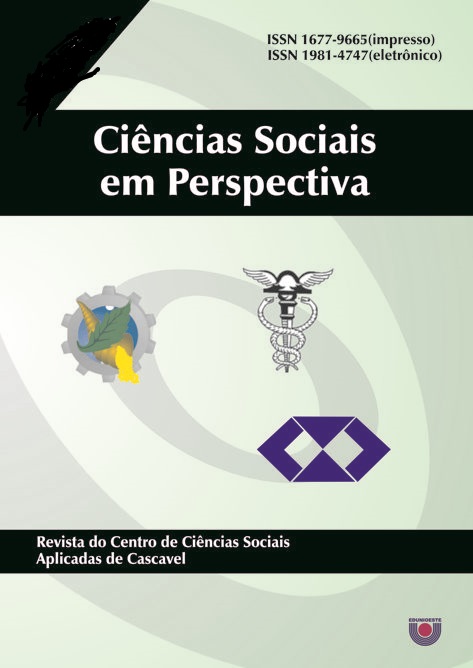POLARIZAÇÃO E DESIGUALDADE REGIONAL: A REGIÃO OESTE NO CONTEXTO DO ESTADO DO PARANÁ
DOI:
https://doi.org/10.48075/revistacsp.v14i26.12150Palabras clave:
Polarização, Desigualdade Regional, Crescimento Econômico, Paraná.Resumen
Este trabalho objetiva analisar a polarização na região oeste do Paraná e, além disso, avaliar as desigualdades regionais existentes tanto nas microrregiões do oeste paranaense, quanto em todas as mesorregiões que compõem o Estado do Paraná. Para analisar a polarização foram utilizadas tabelas com informações pertinentes como PIB per capita, população, Valor Adicionado Fiscal, além de estimativas de taxa de crescimento dos municípios. Para medir o grau de desigualdade regional foi utilizado o Indicador de Desigualdade do Desenvolvimento Regional de Williamson (1977). O período análise compreendeu os anos de 2002 a 2010. No caso da região oeste, constatou-se uma forte polarização por parte das principais cidades de cada microrregião, o que já era esperado, pois Cascavel, Foz do Iguaçu e Toledo são as maiores cidades e, consequentemente as que possuem o maior número de habitantes. Em relação à análise de desigualdade regional na região oeste paranaense, foi constatada uma redução no nível de desigualdade que havia na microrregião de Cascavel. Os resultados mostram um grau elevado de desigualdade entre a mesorregião metropolitana de Curitiba e o restante do estado, sendo que esta mesorregião atingiu o maior nível de desigualdade do Paraná. Por outro lado, constatou-se que a região oeste está inserida em um contexto de crescimento econômico ficando à frente de outras regiões como, por exemplo, a mesorregião norte central, uma região formada há mais tempo e que possui duas das três maiores cidades do Paraná; Londrina e Maringá.
Descargas
Descargas
Archivos adicionales
Publicado
Cómo citar
Número
Sección
Licencia

Esta obra está bajo una licencia internacional Creative Commons Atribución-NoComercial-CompartirIgual 4.0.
Aviso de Direito Autoral Creative Commons
Política para Periódicos de Acesso Livre
Autores que publicam nesta revista concordam com os seguintes termos:
1. Autores mantém os direitos autorais e concedem à revista o direito de primeira publicação, com o trabalho simultaneamente licenciado sob a Licença Creative Commons Attribution que permite o compartilhamento do trabalho com reconhecimento da autoria e publicação inicial nesta revista.2. Autores têm autorização para assumir contratos adicionais separadamente, para distribuição não-exclusiva da versão do trabalho publicada nesta revista (ex.: publicar em repositório institucional ou como capítulo de livro), com reconhecimento de autoria e publicação inicial nesta revista.
3. Autores têm permissão e são estimulados a publicar e distribuir seu trabalho online (ex.: em repositórios institucionais ou na sua página pessoal) a qualquer ponto antes ou durante o processo editorial, já que isso pode gerar alterações produtivas, bem como aumentar o impacto e a citação do trabalho publicado (Veja O Efeito do Acesso Livre).
Licença Creative Commons
Esta obra está licenciada com uma Licença Creative Commons Atribuição-NãoComercial-CompartilhaIgual 4.0 Internacional, o que permite compartilhar, copiar, distribuir, exibir, reproduzir, a totalidade ou partes desde que não tenha objetivo comercial e sejam citados os autores e a fonte.





